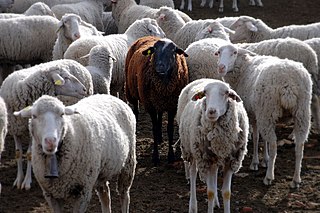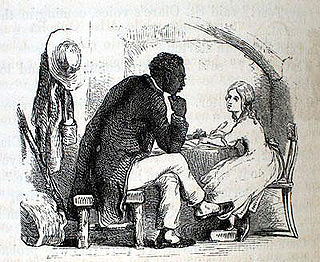 W
WAcculturation is a process of social, psychological, and cultural change that stems from the balancing of two cultures while adapting to the prevailing culture of the society. Acculturation is a process in which an individual adopts, acquires and adjusts to a new cultural environment as a result of being placed into a new culture, or when another culture is brought to you. Individuals of a differing culture try to incorporate themselves into the new more prevalent culture by participating in aspects of the more prevalent culture, such as their traditions, but still hold onto their original cultural values and traditions. The effects of acculturation can be seen at multiple levels in both the devotee of the prevailing culture and those who are assimilating into the culture.
 W
WAnti-LGBT rhetoric are themes, catchphrases, and slogans that have been used against homosexuality or other non-heterosexual sexual orientations in order to demean lesbian, gay, bisexual, and transgender (LGBT) people. They range from the demeaning and the pejorative to expressions of hostility towards homosexuality which are based on religious, medical, or moral grounds. It is a form of hate speech which is illegal in countries such as the Netherlands, Norway, and Sweden.
 W
WIn the English language, black sheep is an idiom used to describe a member of a group, different from the rest, especially within a family, who does not fit in. The term stems from sheep whose fleece is colored black rather than the more common white; these sheep stand out in the flock and their wool was traditionally considered less valuable as it was not able to be dyed.
 W
WCommunitarianism is a philosophy that emphasizes the connection between the individual and the community. Its overriding philosophy is based upon the belief that a person's social identity and personality are largely molded by community relationships, with a smaller degree of development being placed on individualism. Although the community might be a family, communitarianism usually is understood, in the wider, philosophical sense, as a collection of interactions, among a community of people in a given place, or among a community who share an interest or who share a history. Communitarianism usually opposes extreme individualism and disagrees with extreme laissez-faire policies that neglect the stability of the overall community.
 W
WA counterculture is a culture whose values and norms of behavior differ substantially from those of mainstream society, sometimes diametrically opposed to mainstream cultural mores. A countercultural movement expresses the ethos and aspirations of a specific population during a well-defined era. When oppositional forces reach critical mass, countercultures can trigger dramatic cultural changes. Prominent examples of countercultures in the Western world include the Levellers (1645–1650), Bohemianism (1850–1910), the Non-conformists of the 1930s, the more fragmentary counterculture of the Beat Generation (1944–1964), followed by the globalized counterculture of the 1960s (1964–1974), usually associated with the hippie subculture as well as the diversified punk subculture of the 1970s and 1980s.
 W
WCultural diversity is the quality of diverse or different cultures, as opposed to monoculture, the global monoculture, or a homogenization of cultures, akin to cultural evolution. The term cultural diversity can also refer to having different cultures respect each other's differences. Moreover, it is often used to mention the variety of human societies or cultures in a specific region, or in the world as a whole.
 W
WIn political and sociological theory, the elite are a small group of powerful people who hold a disproportionate amount of wealth, privilege, political power, or skill in a society. Defined by the Cambridge Dictionary, the "elite" are "those people or organizations that are considered the best or most powerful compared to others of a similar type."
 W
WAn ethnic group or ethnicity is a grouping of people who identify with each other on the basis of shared attributes that distinguish them from other groups such as a common set of traditions, ancestry, language, history, society, culture, nation, religion or social treatment within their residing area. Ethnicity is sometimes used interchangeably with the term nation, particularly in cases of ethnic nationalism, and is separate from, but related to the concept of races.
 W
WGroup cohesiveness arises when bonds link members of a social group to one another and to the group as a whole. Although cohesion is a multi-faceted process, it can be broken down into four main components: social relations, task relations, perceived unity, and emotions. Members of strongly cohesive groups are more inclined to participate readily and to stay with the group.
 W
WImmigration is the international movement of people to a destination country of which they are not natives or where they do not possess citizenship in order to settle as permanent residents or naturalized citizens. Commuters, tourists, and other short-term stays in a destination country do not fall under the definition of immigration or migration; seasonal labour immigration is sometimes included, however.
 W
WInclusion, in relation to persons with disabilities, is defined as including individuals with disabilities in everyday activities and ensuring they have access to resources and opportunities in ways that are similar to their non-disabled peers. Disability rights advocates define true inclusion as results-oriented, rather than focused merely on encouragement. To this end, communities, businesses, and other groups and organizations are considered inclusive if people with disabilities do not face barriers to participation and have equal access to opportunities and resources.
 W
WInitiation is a rite of passage marking entrance or acceptance into a group or society. It could also be a formal admission to adulthood in a community or one of its formal components. In an extended sense it can also signify a transformation in which the initiate is 'reborn' into a new role. Examples of initiation ceremonies might include Christian baptism or confirmation, Jewish bar or bat mitzvah, acceptance into a fraternal organization, secret society or religious order, or graduation from school or recruit training. A person taking the initiation ceremony in traditional rites, such as those depicted in these pictures, is called an initiate.
 W
WLeadership is both a research area, and a practical skill encompassing the ability of an individual, group or organization to "lead", influence or guide other individuals, teams, or entire organizations. Often viewed as a contested term, specialist literature debates various viewpoints, contrasting Eastern and Western approaches to leadership, and also North American versus European approaches.
 W
WIn the United States of America, majority-minority area or minority-majority area is a term describing a U.S. state or jurisdiction whose population is composed of less than 50% non-Hispanic whites. Racial data is derived from self-identification questions on the U.S. Census and on U.S. Census Bureau estimates.. The term is often used in voting rights law to designate voting districts which are altered under the Voting Rights Act to enable ethnic or language minorities "the opportunity to elect their candidate of choice." In that context, the term is first used by the Supreme Court in 1977. The Court had previously used the term in employment discrimination and labor relations cases.Six states are majority-minority as of July 2019: Hawaii, New Mexico, California, Texas, Nevada, and Maryland. The District of Columbia reached a majority-black status during the latter stages of the Great Migration. Although the district is still majority-minority, black people made up only 44.2% of the population in 2019. The shift has mainly been driven by an influx of Hispanics and non-Hispanic whites. Per the 2019 American Community Survey, the percentage of non-Hispanic white residents has fallen below 60% in Georgia (51.8%), Florida (53.0%), Arizona (54.0%), New Jersey (54.3%), New York (55.1%), Mississippi (56.3%), Louisiana (58.25%), and Alaska (59.8%). All populated United States territories are majority-minority; none of them have had a non-Hispanic white majority. As of 2012, 50 metropolitan areas in the U.S. are majority-minority. As of 2015, 12% of U.S. counties are majority-minority. The whole United States of America is projected to become majority-minority by the middle of the 21st century if current trends continue, making the U.S. the first major post-industrial society in the world where the dominant group transitioned from majority to minority. With alternate immigration scenarios, the whole United States is projected to become majority-minority sometime between 2041 and 2046. Ethnic minority children will make up the majority of children in the entire United States by 2020. Minority children are the majority among children in the following ten states: California, Nevada, New Mexico, Arizona, Texas, Florida, Georgia, Hawaii, Mississippi, and Maryland.
 W
WManagement is the administration of an organization, whether it is a business, a non-profit organization, or a government body.
 W
WIn sociology, popularity is how much a person, idea, place, item or other concept is either liked or accorded status by other people. Liking can be due to reciprocal liking, interpersonal attraction, and similar factors. Social status can be due to dominance, superiority, and similar factors. For example, a kind person may be considered likable and therefore more popular than another person, and a wealthy person may be considered superior and therefore more popular than another person.
 W
WIn social science and politics, power is the capacity of an individual to influence the actions, beliefs, or conduct (behaviour) of others. The term authority is often used for power that is perceived as legitimate by the social structure, not to be confused with authoritarianism. One can regard power as evil or unjust; however, power can also be seen as good and as something inherited or given for exercising humanistic objectives that will help, move, and empower others as well. In general, power derives from the factors of interdependence between two entities and the environment. The use of power need not involve force or the threat of force (coercion). An example of using power without oppression is the concept "soft power". Much of the recent sociological debate about power revolves around the issue of its means to enable – in other words, power as a means to make social actions possible as much as it may constrain or prevent them.
 W
WRegulation 17 was a regulation of the Ontario Conservative government designed to limit instruction in French in French-language Catholic separate schools. It was a regulation written by the Ministry of Education, issued in July 1912 by the Conservative government of premier Sir James P. Whitney. It forbade teaching French beyond grade two in all Separate schools.
 W
WThe Ringelmann effect is the tendency for individual members of a group to become increasingly less productive as the size of their group increases. This effect, discovered by French agricultural engineer Maximilien Ringelmann (1861–1931), illustrates the inverse relationship that exists between the size of a group and the magnitude of group members’ individual contribution to the completion of a task. While studying the relationship between process loss and group productivity, Ringelmann (1913) found that having group members work together on a task actually results in significantly less effort than when individual members are acting alone. Ringelmann discovered that as more and more people are added to a group, the group often becomes increasingly inefficient, ultimately violating the notion that group effort and team participation reliably leads to increased effort on behalf of the members.
 W
WIn the Bible, a scapegoat is one of two kid goats. As a pair, one goat was sacrificed and the living “scapegoat” was released into the wilderness, taking with it all sins and impurities. The concept first appears in Leviticus, in which a goat is designated to be cast into the desert to carry away the sins of the community.Then Aaron shall lay both his hands on the head of the live goat, and confess over it all the iniquities of the people of Israel, and all their transgressions, all their sins, putting them on the head of the goat, and sending it away into the wilderness by means of someone designated for the task. The goat shall bear on itself all their iniquities to a barren region; and the goat shall be set free in the wilderness.
 W
WSettlers: The Mythology of the White Proletariat is a 1983 book by American theorist and activist J. Sakai that looks at the history of the United States of America from an anti-imperialist and non-white perspective. The book was influenced by Maoist thought, and has in turn influenced Third-Worldists, in particular Maoist–Third Worldists.
 W
WIn sociology, socialization is the process of internalizing the norms and ideologies of society. Socialization encompasses both learning and teaching and is thus "the means by which social and cultural continuity are attained".
 W
WThe sociology of immigration involves the sociological analysis of immigration, particularly with respect to race and ethnicity, social structure, and political policy. Important concepts include assimilation, enculturation, marginalization, multiculturalism, postcolonialism, transnationalism and social cohesion.
 W
WThe sociology of race and ethnic relations is the study of social, political, and economic relations between races and ethnicities at all levels of society. This area encompasses the study of systemic racism, like residential segregation and other complex social processes between different racial and ethnic groups.
 W
WUncle Tom syndrome is a theory in multicultural psychology referring to a coping skill in which individuals use passivity and submissiveness when confronted with a threat, leading to subservient behaviour and appeasement, while concealing their true thoughts and feelings. The term "Uncle Tom" comes from the title character of Harriet Beecher Stowe's novel Uncle Tom's Cabin, where an enslaved African American, Tom, is beaten to death for refusing to betray the whereabouts of two other enslaved people.
 W
WAn underdog is a person or group in a competition, usually in sports and creative works, who is largely expected to lose. The party, team, or individual expected to win is called the favorite or top dog. In the case where an underdog wins, the outcome is an upset. An "underdog bet" is a bet on the underdog or outsider for which the odds are generally higher.
 W
WUnus pro omnibus, omnes pro uno is a Latin phrase that means One for all, all for one. It is the unofficial motto of Switzerland. A French version, Un pour tous, tous pour un, was made famous by Alexandre Dumas in the 1844 novel The Three Musketeers.
 W
WThe Wrestlers is an oil painting on millboard by English artist William Etty, painted around 1840 and currently in the York Art Gallery, in York, England. It depicts a wrestling match between a black man and a white man, both glistening with sweat and under an intense light emphasising their curves and musculature. While little documentation of the painting exists prior to 1947, it is likely that it was painted over a period of three evenings at the life class of the Royal Academy.